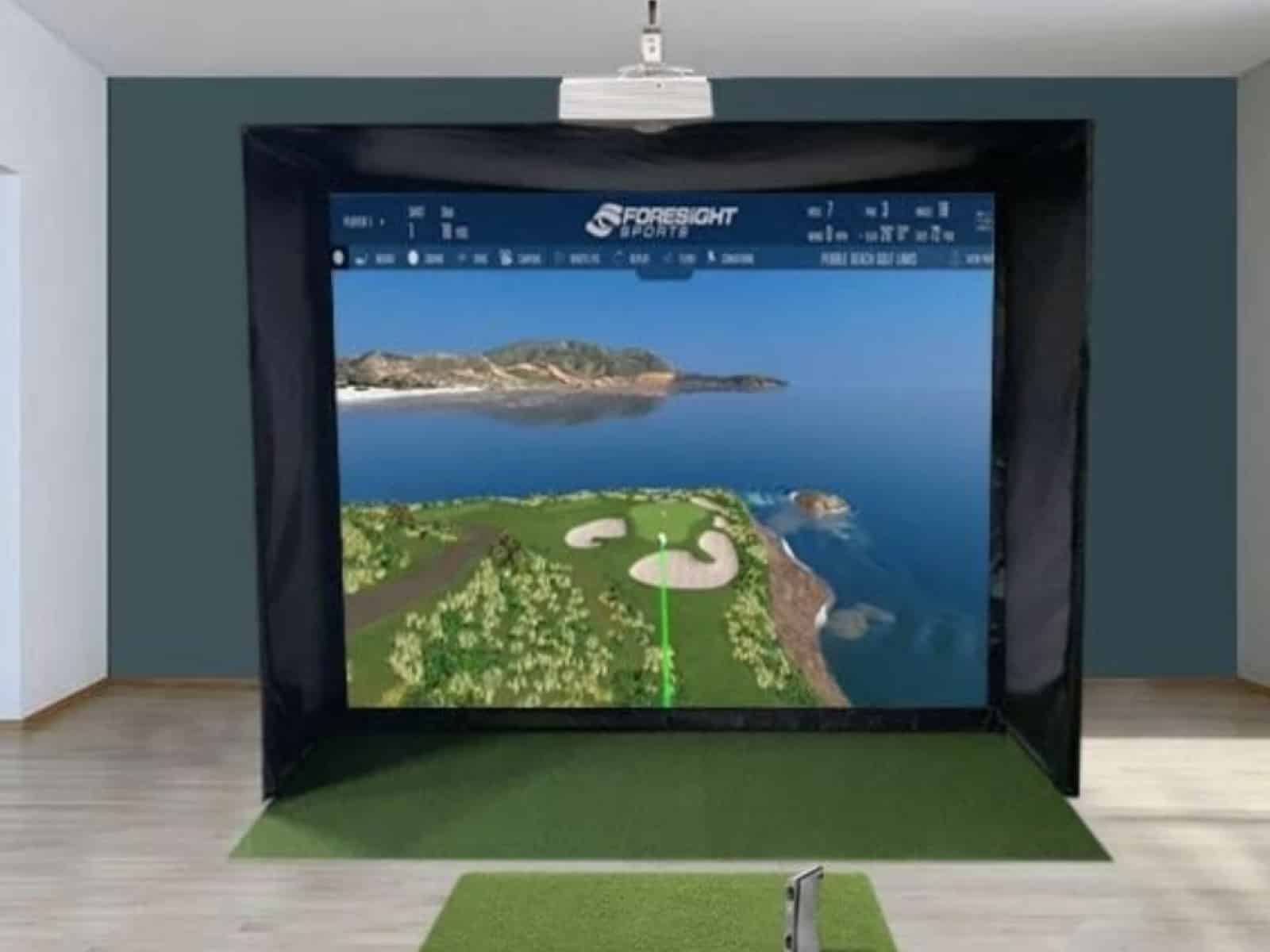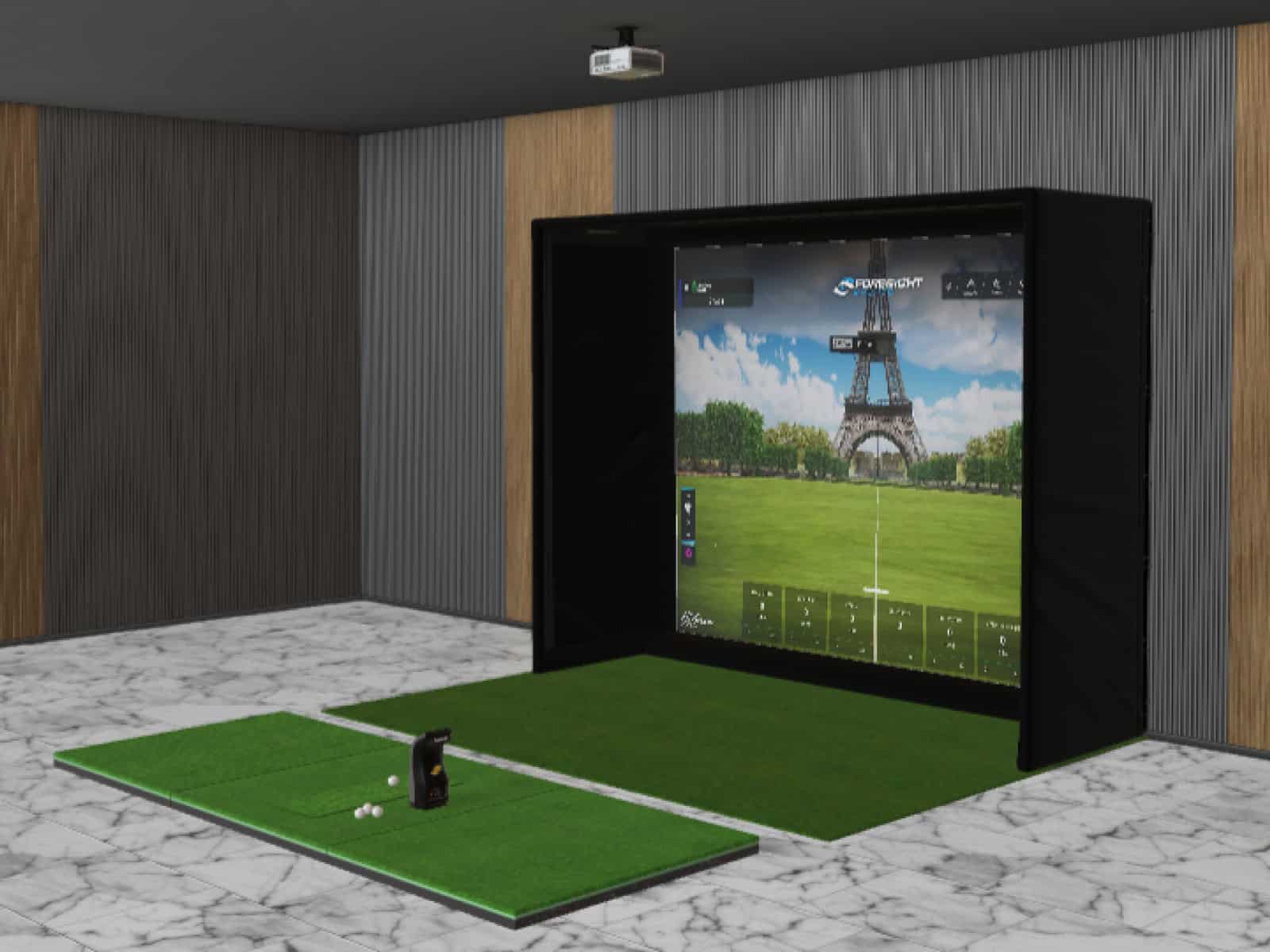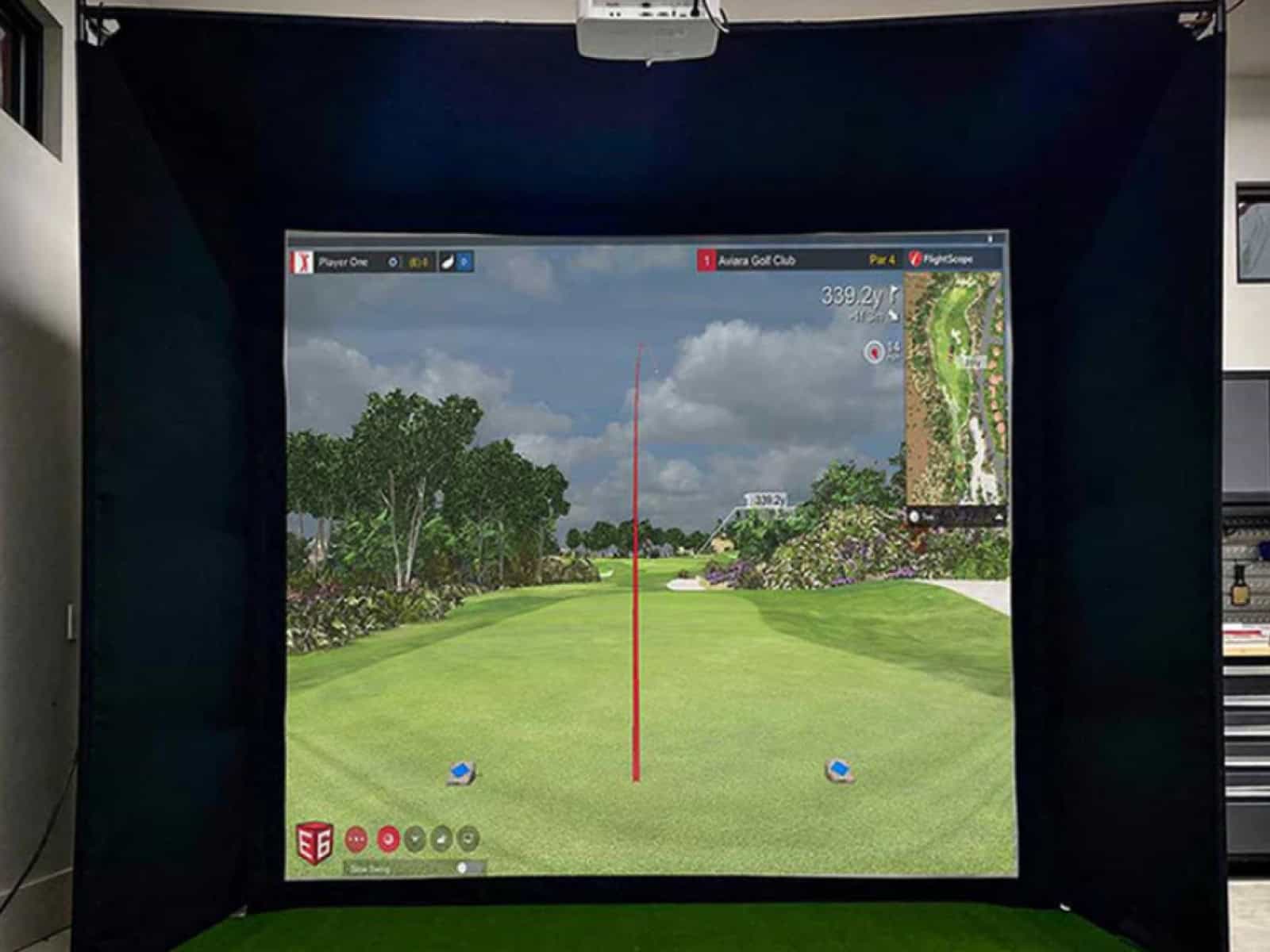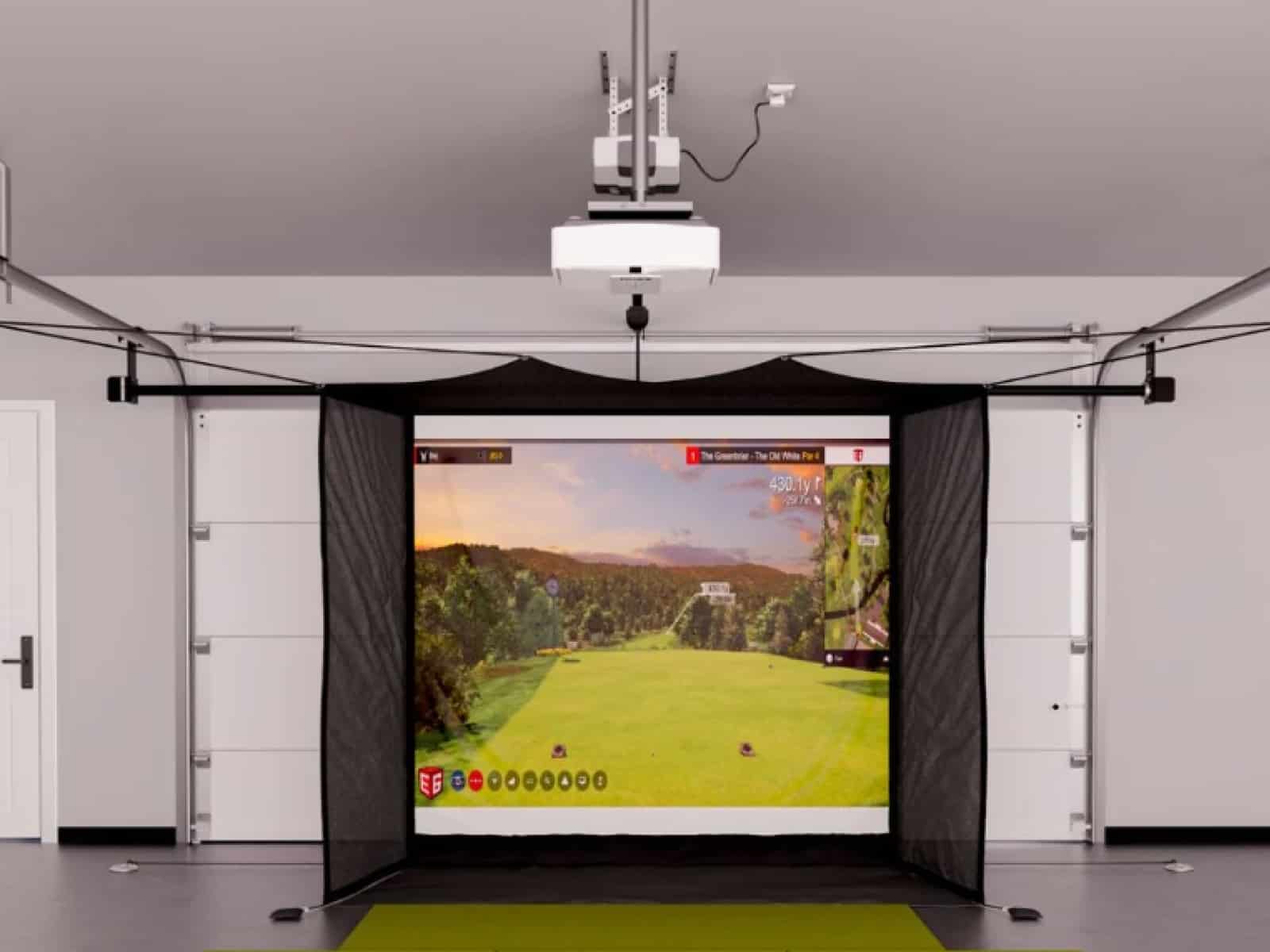No longer confined to outdoor spaces or fair weather, simulators offer year-round enjoyment, allowing you to refine your swing during a snowstorm or play world-renowned courses from your living room. This newfound flexibility allows you to improve your skills, stay connected to the game, and simply have fun with friends and family.
The technology powering these simulators has evolved dramatically, offering increasingly accurate tracking, immersive graphics, and realistic gameplay. This, coupled with improved accessibility and affordability, has made them attainable to a wider audience.
Understanding the types of technology used in golf simulators will help you make better choices when choosing a package that suits your needs, preferences and constraints. That’s exactly what we will be doing in the upcoming sections of this article.
Exploring the Three Types of Golf Simulators
With the vast array of golf simulation technology available, understanding the key differences between each type is crucial for making an informed decision. Let’s go through the three main categories: photometric, radar, and infrared simulators, analyzing their distinct characteristics and suitability for your specific needs.
Check Also: What Is a Golf Simulator? And How Does It Work?
Photometric Golf Simulators
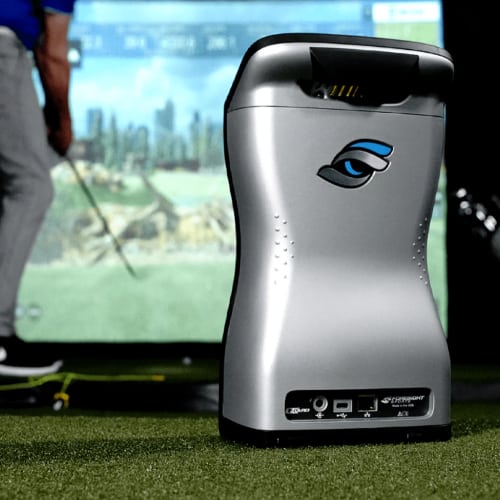
Photometric simulators, also known as camera-based systems, utilize strategically placed high-speed cameras to capture the intricate details of your swing and ball launch. This technology provides a very high level of accuracy and captures a wealth of shot data, including ball spin, club path, and face angle.
Advantages
- Excellent Accuracy: Photometric systems deliver extremely precise ball tracking, enabling comprehensive analysis of your swing mechanics and performance.
- Detailed Shot Data: They provide a wealth of information to work on your technique and make data-driven decisions about your game.
- Available in both fixed overhead and portable systems: You can choose a permanently installed indoor system like the FS GCHawk, Trugolf Apogee or Uneekor EYE XO2, which offer a cleaner playing area and seamless support for right and left-handed play.
- Can Work perfectly in Smaller Spaces: When used indoors, camera-based systems require less room length than their radar counterparts.
Disadvantages
- Higher Price Point: Photometric systems, especially high-end units from Foresight Sports and the like, are generally the most expensive option due to their advanced technology.
- More Setup Involved: Setting up and calibrating these systems can be more complex compared to other options.
Popular Examples
Very popular photometric sims/monitors include the following models:
- HD Golf
- SkyTrak
- Foresight Sports GC3, GCQuad, and GCHawk
- Uneekor EYE XO2, EYE XO, QED, and EYE MINI
- Trugolf Apogee
Doppler Radar Golf Simulators
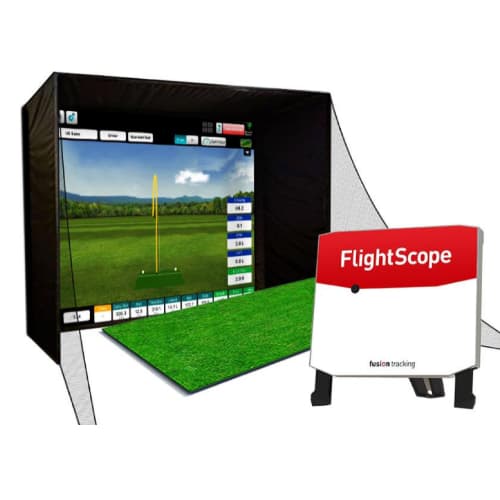
Radar simulators utilize advanced Doppler radar technology to track the ball’s trajectory and movement. This technology is less reliant on precise camera positioning and offers a more compact and portable solution.
Radar systems are better and more accurate outdoors or in longer spaces that allow for more ball flight time to maximize tracking and accuracy. Still, they tend to lose some accuracy when used indoors.
Advantages
- Portability and Compact Size: Ideal for transportability or those seeking a more mobile setup. The launch monitor can also be taken to the course or driving range.
- Simple Setup: Minimal setup and calibration are required, making them user-friendly for newcomers. Just position the launch monitor behind the tee point and you’re good to go.
- The most accurate sim technology for Outdoor use: Radar systems are the most accurate when used outdoors because they have unlimited ball flight time.
- Can Provide Huge Number of Metrics: Flightscope’s X3C, a radar-based launch monitor, provides a whopping 50+ data points related to full swings and short game (putting and chipping).
Disadvantages
- Slightly Less Accurate Indoors: Radar offers slightly lower accuracy compared to photometric systems, particularly indoors, where the ball flight time is limited.
- Require More Room Depth: For indoor use, a radar-based golf simulator requires between 16′ and 20’+ room depth to provide accurate readings. This makes the technology less suitable for smaller indoor spaces.
Examples
Here are some of the most popular radar systems available today for different price points:
- The benchmark of accuracy – Trackman uses radar technology (coupled with high-speed cameras).
- Flightscope’s systems, including the X3C and Mevo+
- Skytrak Plus (using a dual radar & photometric system)
- Rapsodo’s MLM and MLM2Pro
- Full Swing Kit
- Garmin Approach R10
Infrared Golf Simulators
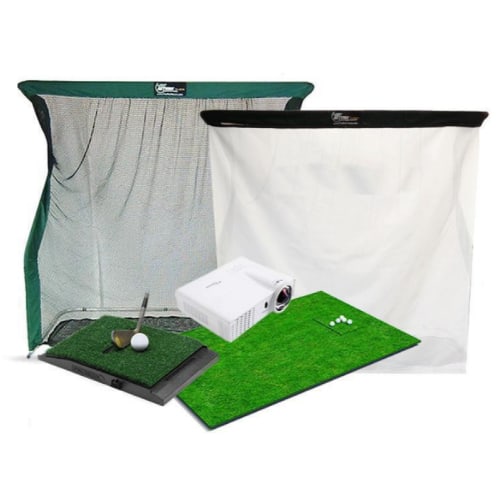
Infrared (IR) simulators utilize infrared sensors to track the ball’s movement. This technology offers the most budget-friendly solution but sacrifices accuracy and data detail.
Advantages
- Budget-Friendly: The most affordable option among the three types, ideal for casual players or those on a tight budget.
- Simple Setup: Infrared systems require minimal space and setup, making them convenient for occasional use.
- Ideal for Beginners: Provides a basic simulation experience for beginners or those new to the technology. They can also be a more affordable initiation to the world of virtual golf.
Disadvantages
- Lower Accuracy: Infrared offers the lowest level of accuracy, limiting the reliability of shot data and swing analysis.
- Limited Shot Data: Provides minimal data feedback, restricting the ability to track and improve your swing mechanics.
- Limited to Indoor Use: Infrared technology can only be used indoors. The light beams are affected by daylight and give inaccurate readings if used outdoors.
Popular Examples
- Optishot 2
- Trugolf Vista Series (Vista 12, Vista 10 & Vista 8). These use more advanced infrared systems that also employ sonic triangulation technology to enhance accuracy. They are much more accurate than the typical infrared system, but they also cost more money.
Choosing the right golf simulator requires careful consideration of your individual needs and preferences. By understanding the distinct features of each type, you can make an informed decision that aligns with your budget, skill level, and golfing aspirations. Some systems use combinations of different technologies to enhance accuracy, as is the case with Foresight Sports GC series and Uneekor’s products (Infrared & camera tracking), Skytrak Plus, Trackman, Full Swing, Flightscope’s systems (Radar + Camera tracking).
Choosing the Right Golf Simulator for You
With the intricacies of each simulator type unveiled, the exciting task of finding your perfect golfing match awaits. We will now guide you through the process of selecting the ideal system to match your needs and aspirations.
Defining Your Needs and Budget

Before starting your search, clearly define your primary goals for using a golf simulator. Are you aiming to improve your game through focused practice and swing analysis? Or perhaps you prioritize entertainment and social play with friends and family? Identifying your intent will help you prioritize specific features and narrow down your options significantly. If you’re particularly interested in a comparison of the top-performing systems, you can check our guide on the best at-home golf simulators for further detailed insights.
Next, set a realistic budget that aligns with your desired features and functionality. Remember, golf simulators come in a wide range of capabilities and price points. Determining your spending limit early on will enable you to focus on systems within your range, avoiding unnecessary temptation beyond your budget.
Evaluating Simulator Features
Now, armed with your goals and budget, explore the specific features offered by different simulators. Some key aspects to consider are:
- Accuracy and shot data detail: For dedicated practice enthusiasts, prioritize systems with high accuracy and detailed shot data, enabling comprehensive swing analysis and performance tracking. Both Doppler radar and photometric simulators excel in this area.
- Course selection and game modes: If diverse virtual landscapes and engaging game modes are high on your list, explore systems that offer a vast library of courses and a variety of gameplay options. We suggest going with a system that supports TGC2019 and its huge 150,000+ course library.
- Simulator footprint and setup requirements: Consider the available space within your home or practice area. Some systems require ample space for a proper swing, while others offer compact solutions for smaller environments.
- Additional features: Look for systems that offer features that enhance your enjoyment and personalize your experience. Putting analysis, custom club profiles and social play connectivity are just a few examples of desirable features.
Seeking Expert Advice and Trying Before You Buy

Once you have identified a few potential candidates based on your criteria, consider seeking expert advice from golf simulator retailers or professionals. Their expertise can provide valuable insights and help you navigate the technical complexities of different systems.
Furthermore, take advantage of simulator demo opportunities. Many retailers offer demo sessions where you can try out different models firsthand. This experience allows you to assess the user interface, simulator responsiveness, and overall feel of each system before making a final decision.
FAQs About Golf Simulators
Now that you’ve explored the world of golf simulators and gained valuable insights into their features and functions, you might still have some lingering questions. We will provide answers to some of the most frequently asked ones in this section.
What is the average cost of a golf simulator?
The cost of a golf simulator varies greatly depending on the type of system you choose and the desired features. Infrared systems start at around $1,000 and up, providing the most affordable solution.
Photometric and radar systems range from the most affordable to the most expensive and exclusive systems. The price of a photometric or radar system can be from a few thousand dollars ($3,000+) for basic systems to $70,000+ for the most premium systems from companies like HD Golf and Trackman.
Remember, these are just general ranges. The specific price within each category will depend on factors like brand, model, accuracy level, software features, and additional accessories.
Are golf simulators accurate?
Yes, modern golf simulators are highly accurate. Photometric and radar systems are far more accurate than infrared ones. Even within the same category, accuracy can differ between systems, as a very expensive package will be more accurate than cheaper models because it uses better components, technologies and materials.
Do I need a lot of space for a golf simulator?
Space requirements vary significantly between different types of simulators. Usually, an indoor space of 9’H x 12’W x 10-12′ L will be the minimum to use a sim comfortably. The more the available space, the better.
As mentioned earlier, if you consider a radar-based system, you must have at least 16′ in room depth for the system to work properly.
What additional resources are available to learn more about golf simulators?
Several resources are available to help you further understand golf simulators:
– Online reviews: Read expert reviews and user testimonials to gain insights into different models and compare features.
– Manufacturer websites: Visit the websites of leading golf simulator manufacturers for detailed information, specifications, and demo videos.
– Industry publications: Read articles and blogs from golf publications and websites focused on technology and equipment.
– Retailer consultations: Consult with experts at golf simulator retailers who can answer your questions and offer personalized recommendations.
We do have some interesting articles to help you out; the following are a few useful ones:
– How much does a golf simulator cost?
– Indoor golf simulator room size
– Best golf simulators
Final Thoughts
The world of golf simulation is constantly evolving, with new technologies emerging and immersive experiences being developed at an exciting pace. By embracing this innovative technology, you can unlock a world of possibilities, maximize your golfing enjoyment, and stay at the forefront of a revolutionizing sport. Understanding the differences between launch monitors and golf simulators is a crucial step in finding the perfect setup for your needs.
Remember, the journey towards finding your perfect golfing match is personal and unique. Embrace the exploration, experiment with different options, and prioritize features that resonate with your specific needs and aspirations.
If you have any other questions or comments, please contact us.
Thanks for reading!


